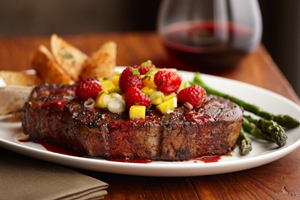A Vegetable of a Different Color
Wednesday, 01 June 2011 09:19By Chef Colin Roche, MBA, CEC, CCE, FMP, CHE
 Plants often have beautiful colors that add interest and appeal to meals. Their pigments, however, are affected by acid and alkaline, so care should be taken to cook them properly.
Plants often have beautiful colors that add interest and appeal to meals. Their pigments, however, are affected by acid and alkaline, so care should be taken to cook them properly.
Here is an experiment you can do in your culinary labs to show students the effects of acid and alkaline on vegetable pigment.
The Lesson: “Alkalis / Acid Experiment”
Directions: Break the class into groups and have them gather the following vegetables. (Instructor should demonstrate how to prep each product.)

 Johnson & Wales University's Cuisinart Center for Culinary Excellence in Providence earns LEED gold certification.
Johnson & Wales University's Cuisinart Center for Culinary Excellence in Providence earns LEED gold certification. Culinary Legend Honored at 2011 Augie™ Awards
Culinary Legend Honored at 2011 Augie™ Awards Premium and natural descriptors resonate with consumers of beef and pork menu items, finds Technomic.
Premium and natural descriptors resonate with consumers of beef and pork menu items, finds Technomic.